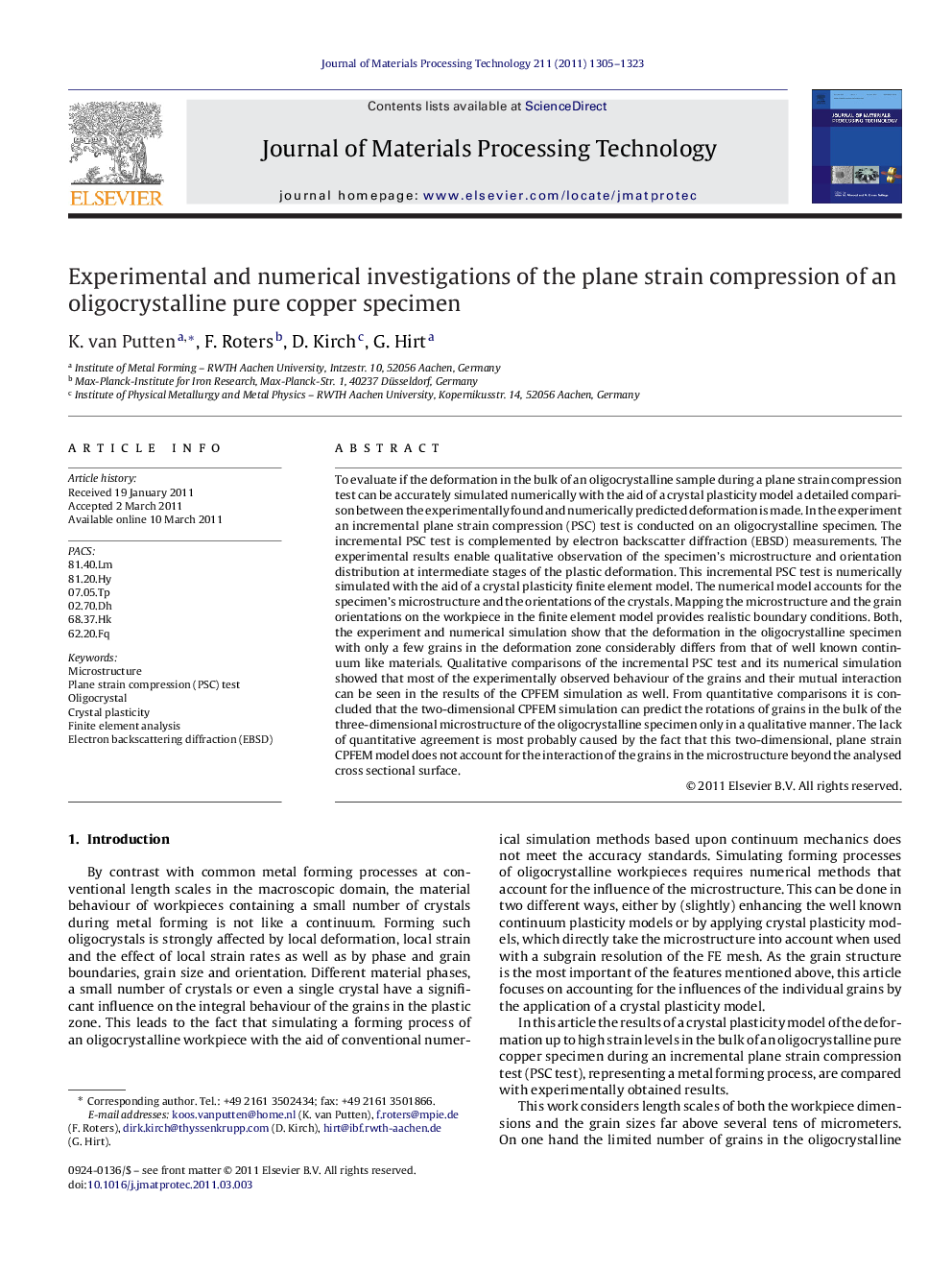| کد مقاله | کد نشریه | سال انتشار | مقاله انگلیسی | نسخه تمام متن |
|---|---|---|---|---|
| 798419 | 903258 | 2011 | 19 صفحه PDF | دانلود رایگان |

To evaluate if the deformation in the bulk of an oligocrystalline sample during a plane strain compression test can be accurately simulated numerically with the aid of a crystal plasticity model a detailed comparison between the experimentally found and numerically predicted deformation is made. In the experiment an incremental plane strain compression (PSC) test is conducted on an oligocrystalline specimen. The incremental PSC test is complemented by electron backscatter diffraction (EBSD) measurements. The experimental results enable qualitative observation of the specimen's microstructure and orientation distribution at intermediate stages of the plastic deformation. This incremental PSC test is numerically simulated with the aid of a crystal plasticity finite element model. The numerical model accounts for the specimen's microstructure and the orientations of the crystals. Mapping the microstructure and the grain orientations on the workpiece in the finite element model provides realistic boundary conditions. Both, the experiment and numerical simulation show that the deformation in the oligocrystalline specimen with only a few grains in the deformation zone considerably differs from that of well known continuum like materials. Qualitative comparisons of the incremental PSC test and its numerical simulation showed that most of the experimentally observed behaviour of the grains and their mutual interaction can be seen in the results of the CPFEM simulation as well. From quantitative comparisons it is concluded that the two-dimensional CPFEM simulation can predict the rotations of grains in the bulk of the three-dimensional microstructure of the oligocrystalline specimen only in a qualitative manner. The lack of quantitative agreement is most probably caused by the fact that this two-dimensional, plane strain CPFEM model does not account for the interaction of the grains in the microstructure beyond the analysed cross sectional surface.
Journal: Journal of Materials Processing Technology - Volume 211, Issue 8, August 2011, Pages 1305–1323